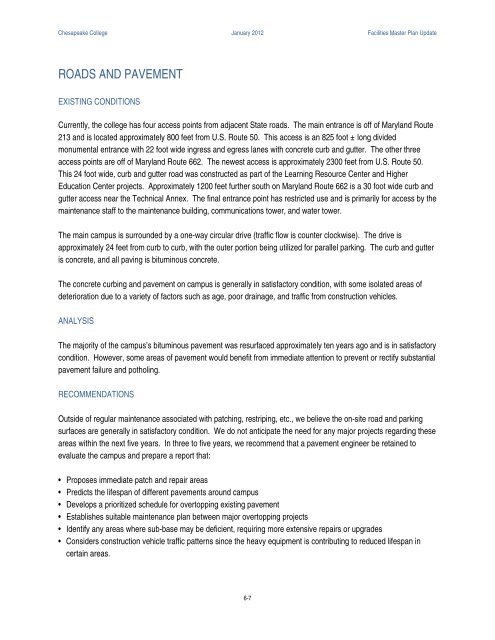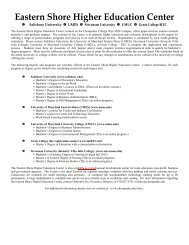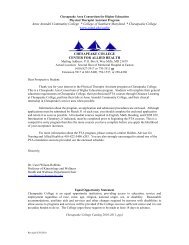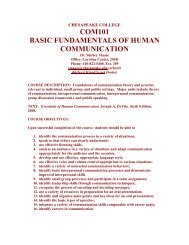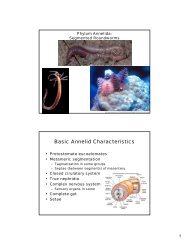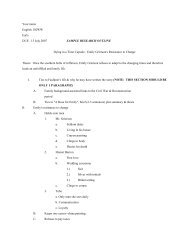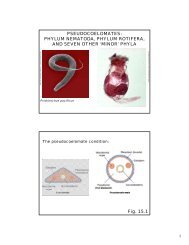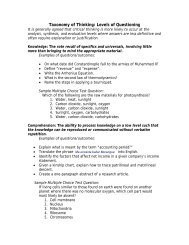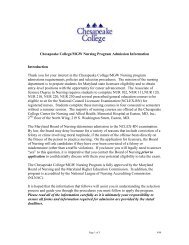Facilities Master Plan - 2012 - Chesapeake College
Facilities Master Plan - 2012 - Chesapeake College
Facilities Master Plan - 2012 - Chesapeake College
You also want an ePaper? Increase the reach of your titles
YUMPU automatically turns print PDFs into web optimized ePapers that Google loves.
<strong>Chesapeake</strong> <strong>College</strong> January <strong>2012</strong> <strong>Facilities</strong> <strong>Master</strong> <strong>Plan</strong> UpdateROADS AND PAVEMENTEXISTING CONDITIONSCurrently, the college has four access points from adjacent State roads. The main entrance is off of Maryland Route213 and is located approximately 800 feet from U.S. Route 50. This access is an 825 foot ± long dividedmonumental entrance with 22 foot wide ingress and egress lanes with concrete curb and gutter. The other threeaccess points are off of Maryland Route 662. The newest access is approximately 2300 feet from U.S. Route 50.This 24 foot wide, curb and gutter road was constructed as part of the Learning Resource Center and HigherEducation Center projects. Approximately 1200 feet further south on Maryland Route 662 is a 30 foot wide curb andgutter access near the Technical Annex. The final entrance point has restricted use and is primarily for access by themaintenance staff to the maintenance building, communications tower, and water tower.The main campus is surrounded by a one-way circular drive (traffic flow is counter clockwise). The drive isapproximately 24 feet from curb to curb, with the outer portion being utilized for parallel parking. The curb and gutteris concrete, and all paving is bituminous concrete.The concrete curbing and pavement on campus is generally in satisfactory condition, with some isolated areas ofdeterioration due to a variety of factors such as age, poor drainage, and traffic from construction vehicles.ANALYSISThe majority of the campus’s bituminous pavement was resurfaced approximately ten years ago and is in satisfactorycondition. However, some areas of pavement would benefit from immediate attention to prevent or rectify substantialpavement failure and potholing.RECOMMENDATIONSOutside of regular maintenance associated with patching, restriping, etc., we believe the on-site road and parkingsurfaces are generally in satisfactory condition. We do not anticipate the need for any major projects regarding theseareas within the next five years. In three to five years, we recommend that a pavement engineer be retained toevaluate the campus and prepare a report that:• Proposes immediate patch and repair areas• Predicts the lifespan of different pavements around campus• Develops a prioritized schedule for overtopping existing pavement• Establishes suitable maintenance plan between major overtopping projects• Identify any areas where sub-base may be deficient, requiring more extensive repairs or upgrades• Considers construction vehicle traffic patterns since the heavy equipment is contributing to reduced lifespan incertain areas.6-7


